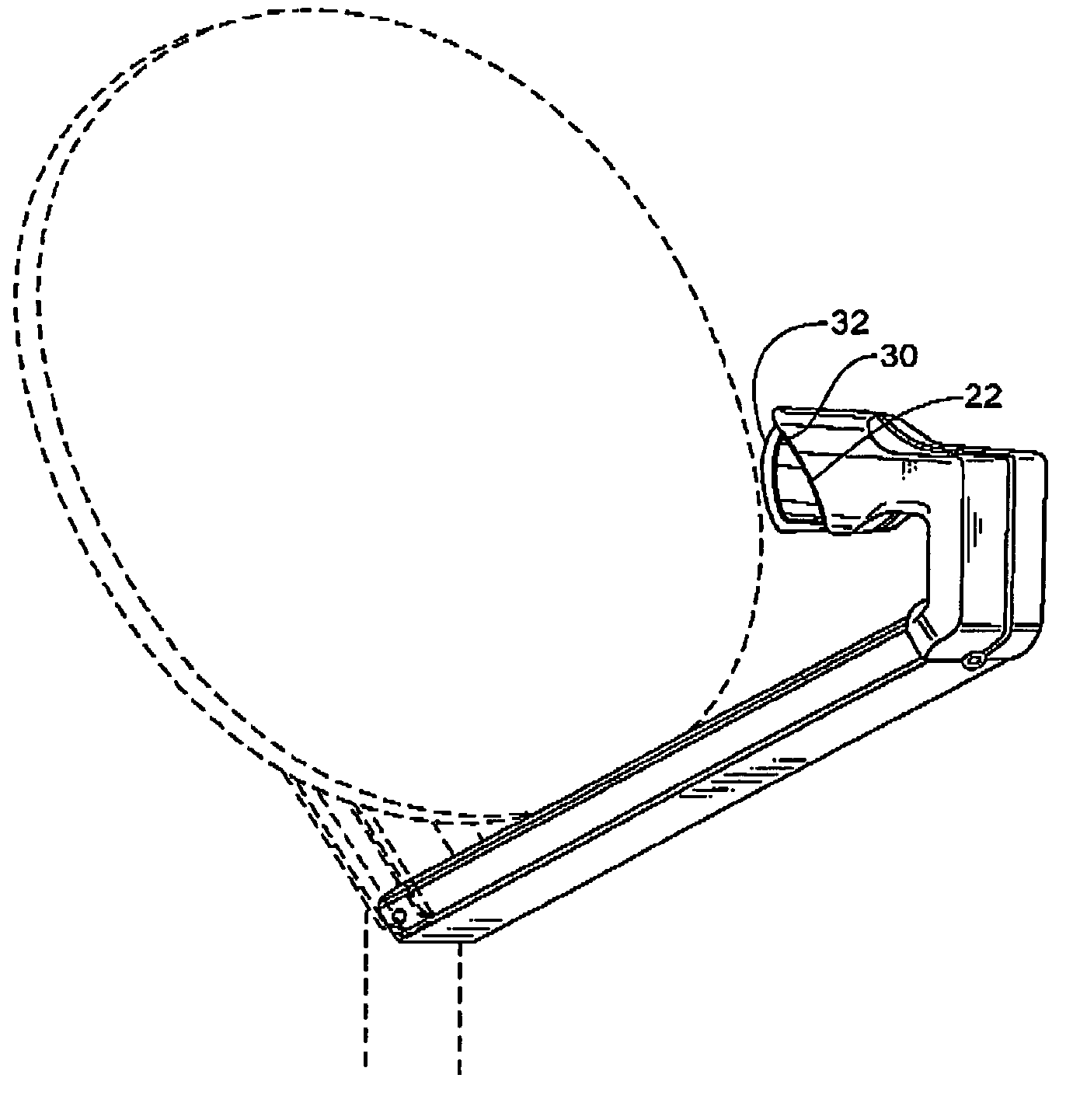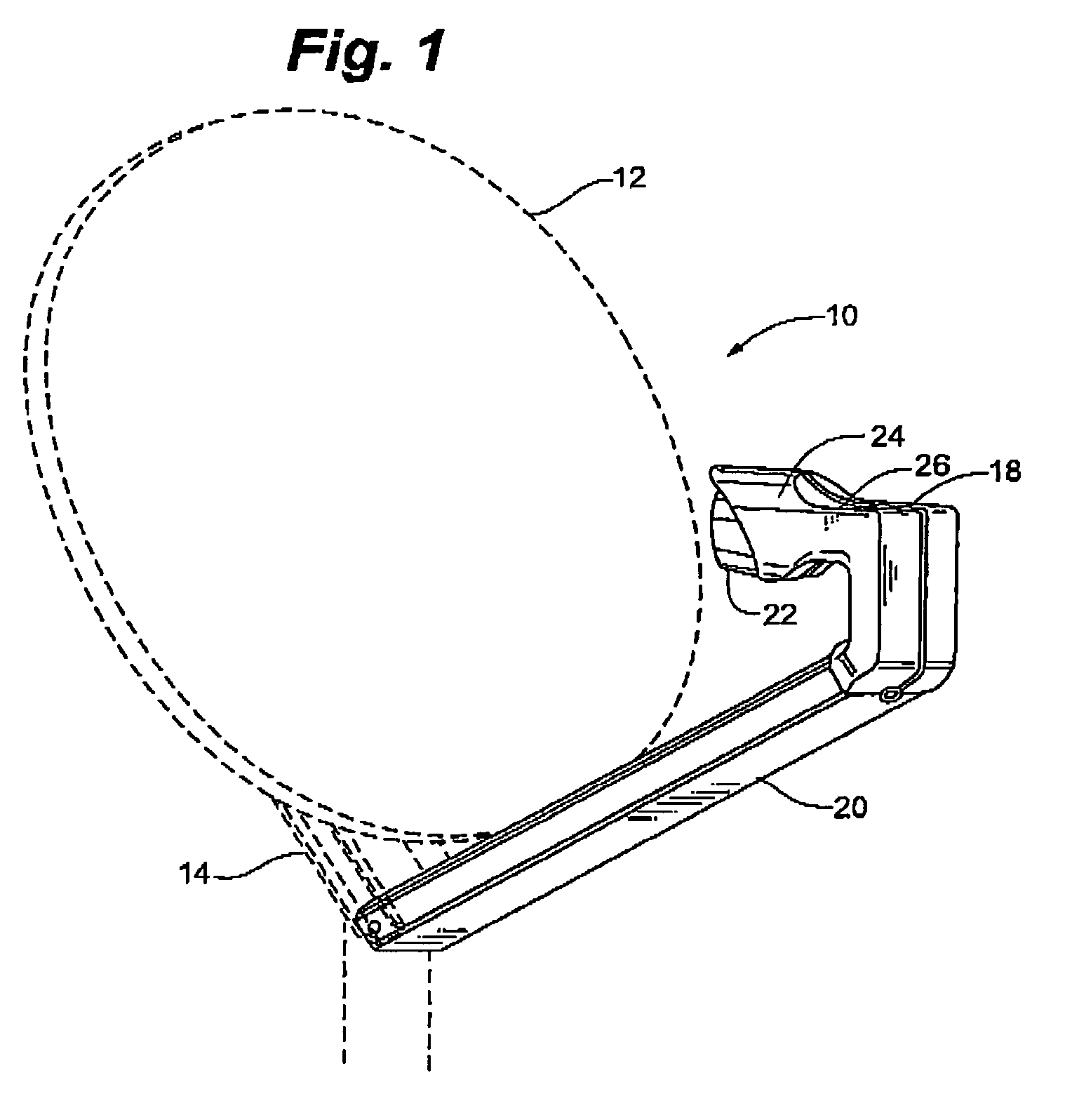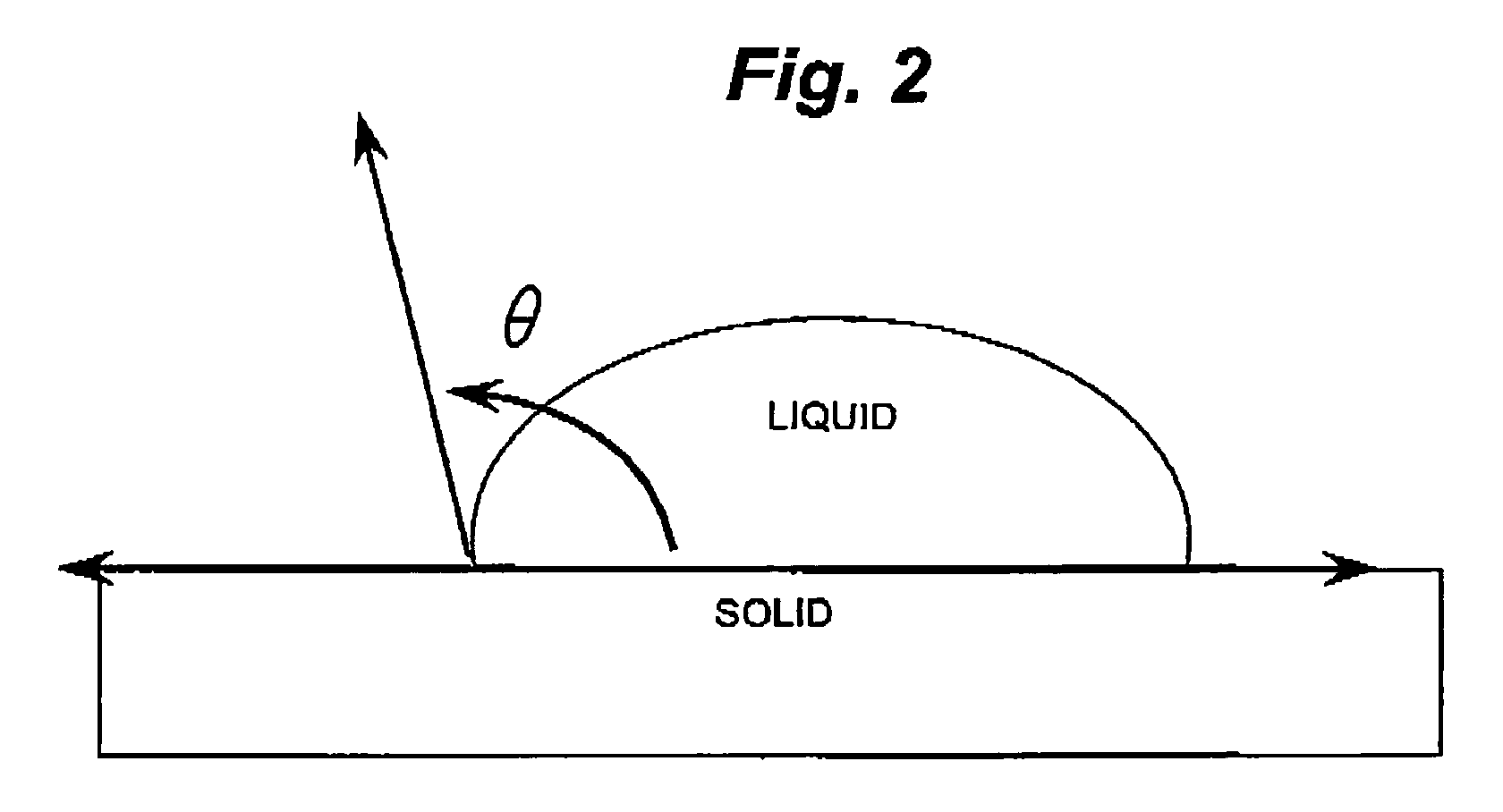Antenna systems for reliable satellite television reception in moisture conditions
a technology of reliable satellite television and antenna system, which is applied in the direction of antenna, antenna details, radiating element housing, etc., can solve the problem that reducing the amount of water on the reflective surface only has a limited or insignificant effect on the overall performance of the satellite antenna, and achieves excellent coverage of the transmissive surface
- Summary
- Abstract
- Description
- Claims
- Application Information
AI Technical Summary
Benefits of technology
Problems solved by technology
Method used
Image
Examples
Embodiment Construction
[0034]The present invention utilizes superhydrophobic materials and coatings to minimize the impact of water on the transmissivity of the satellite signal through transmissive surfaces in an antenna system. While theoretical calculations explaining the problems of rain fade are open to debate, the effect is real in that signal loss occurs.
[0035]The following table documents the results of using various commercially available compounds and techniques for addressing the rain fade problem simulated by spraying water onto a DBS antenna dish that was coated with the material.
[0036]
TABLE 1Prior Art Dome Coating TechniquesSignalSignalSignalRivuletsVisualBeforeAfterrecovery afterand waterbubbleMaterialwater spraywater spraywater sprayfilmvelocityCommentsRain “X” ™660MediumYes / noMediumBubble size1 min 3 / 16 ø to≅ 1 / 64”øBull Frog ™590Very slowYes / noSlowBubble size5 min no⅜”ø tosignal≅ 1 / 32”øTeflon ®660MediumYes / noMedium1 minUrethane660SlowYes / noSlowLost signalPaint3-6 minvery quicklyScotchgard...
PUM
 Login to View More
Login to View More Abstract
Description
Claims
Application Information
 Login to View More
Login to View More - R&D
- Intellectual Property
- Life Sciences
- Materials
- Tech Scout
- Unparalleled Data Quality
- Higher Quality Content
- 60% Fewer Hallucinations
Browse by: Latest US Patents, China's latest patents, Technical Efficacy Thesaurus, Application Domain, Technology Topic, Popular Technical Reports.
© 2025 PatSnap. All rights reserved.Legal|Privacy policy|Modern Slavery Act Transparency Statement|Sitemap|About US| Contact US: help@patsnap.com



